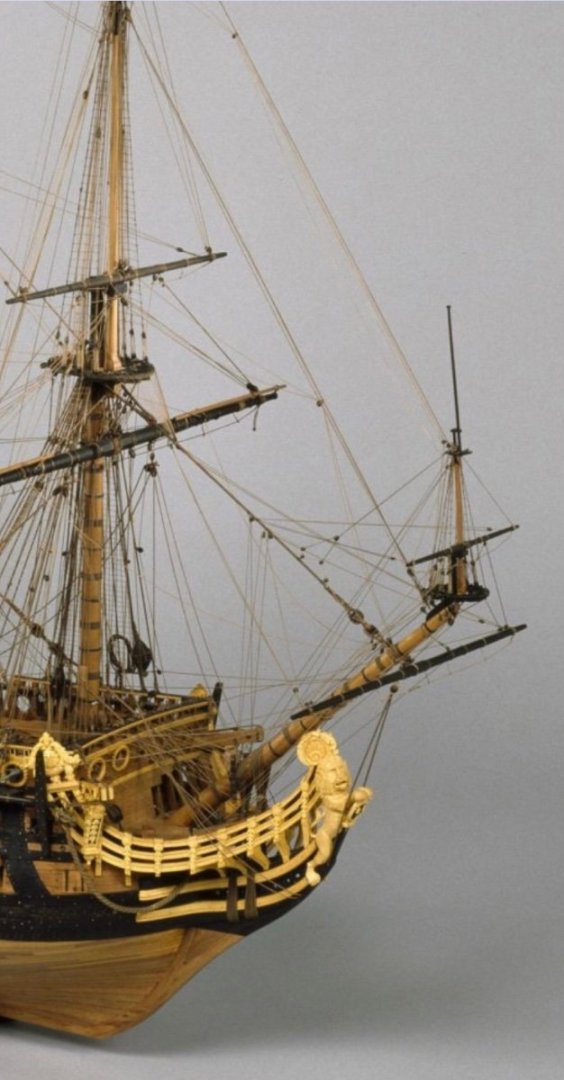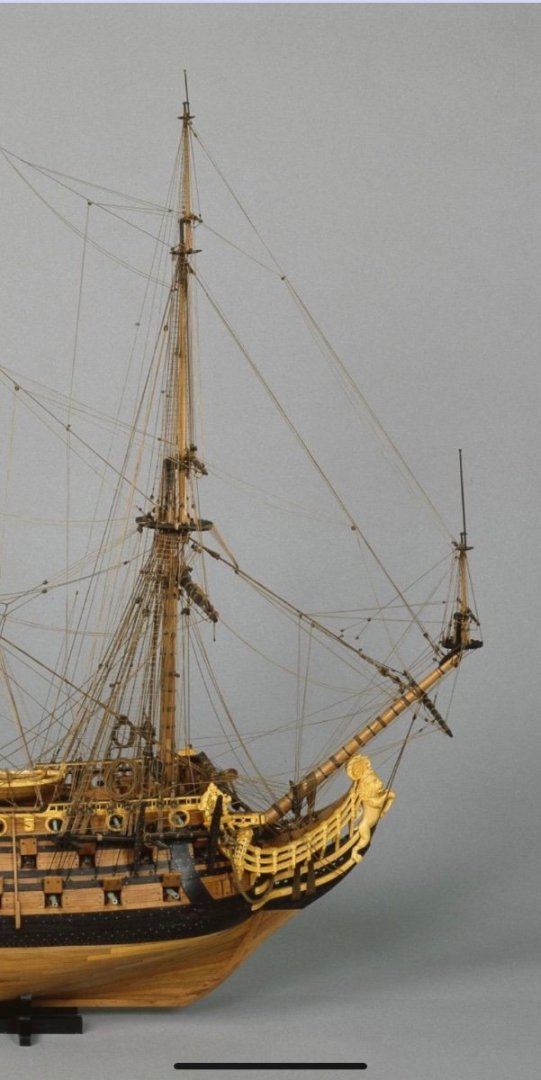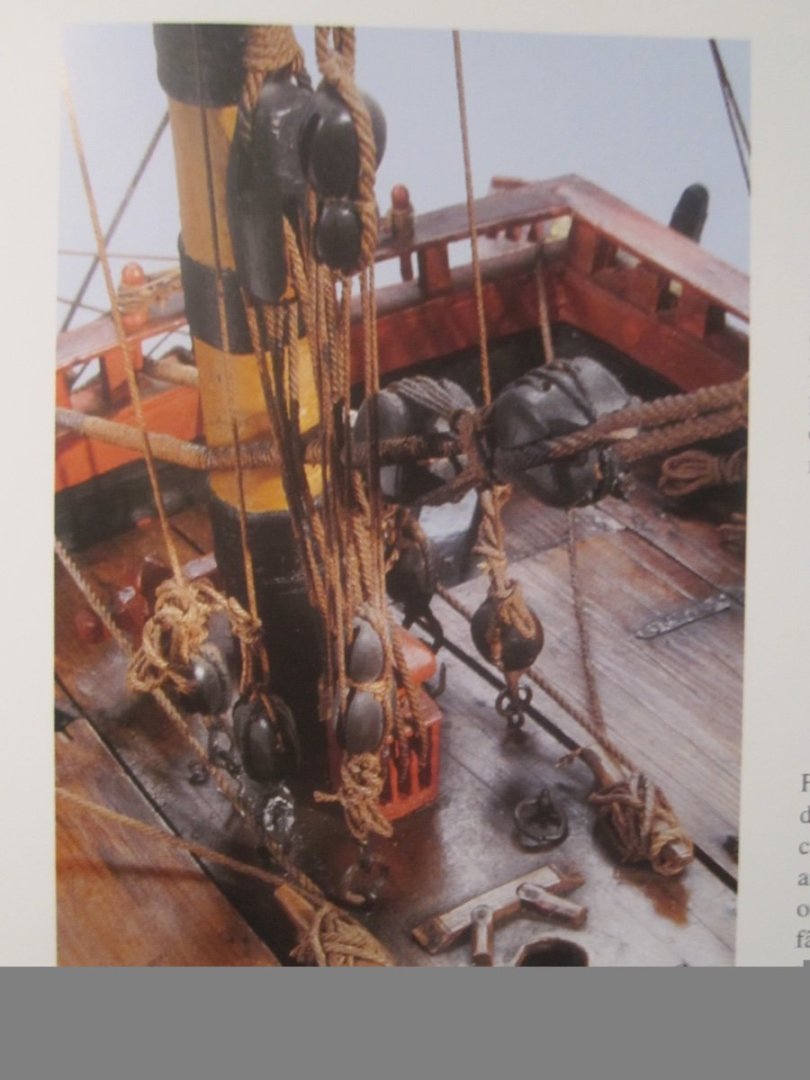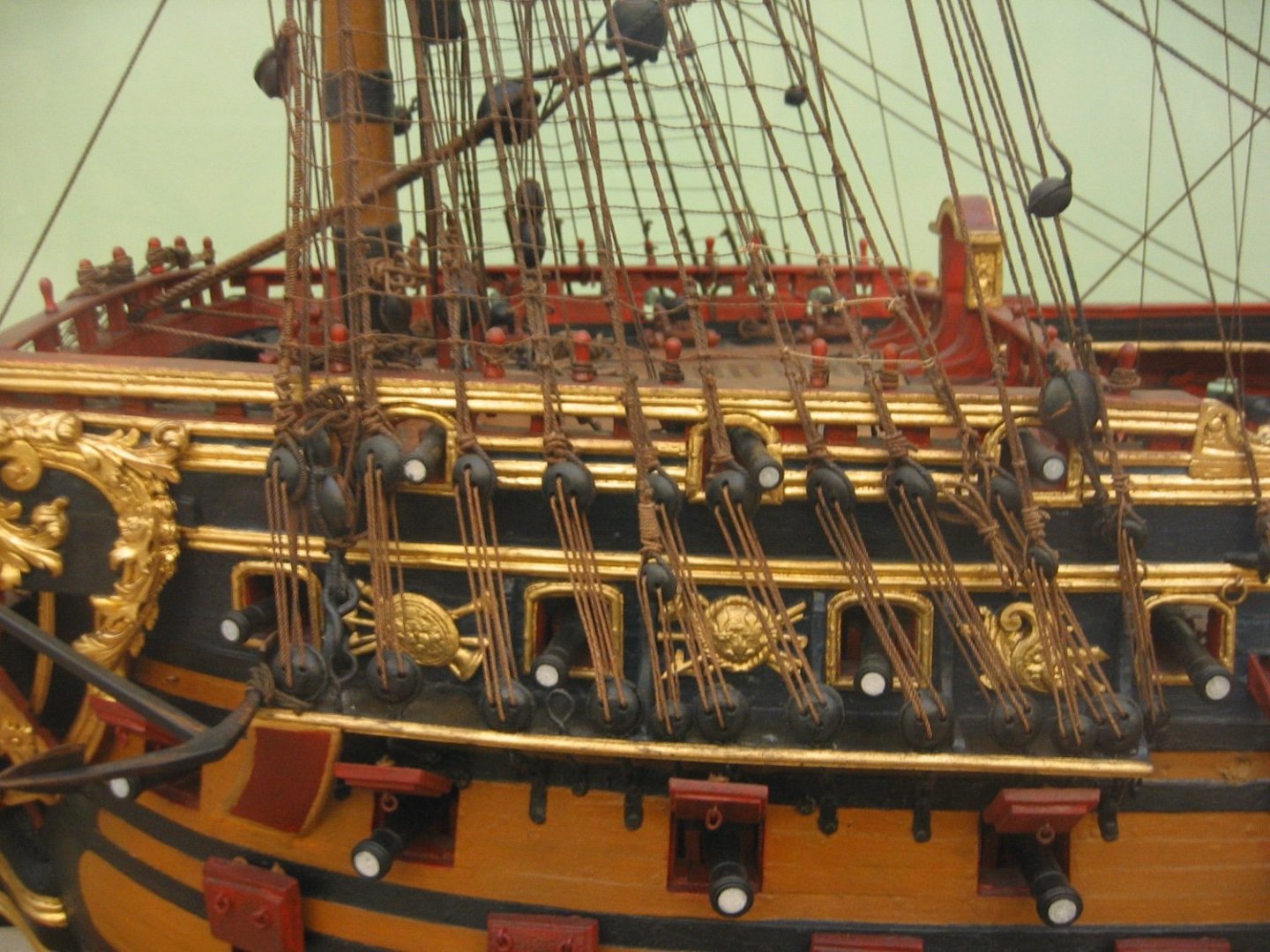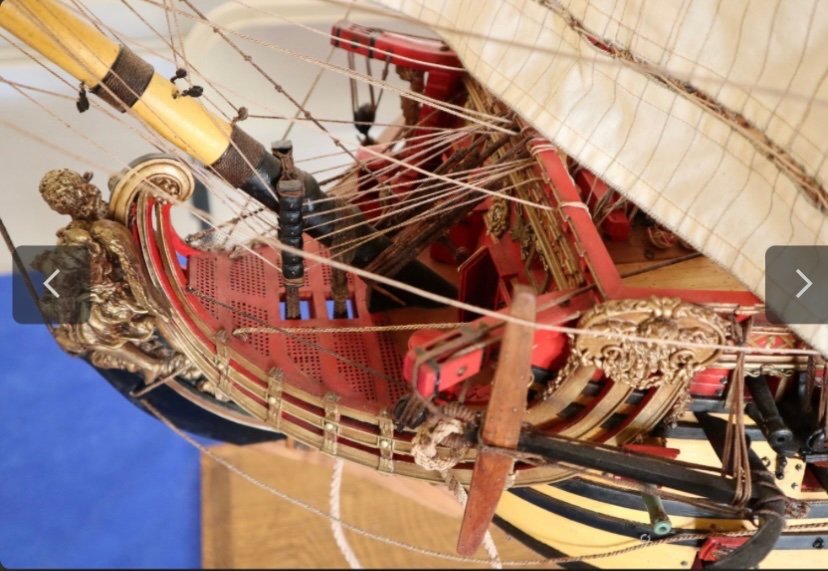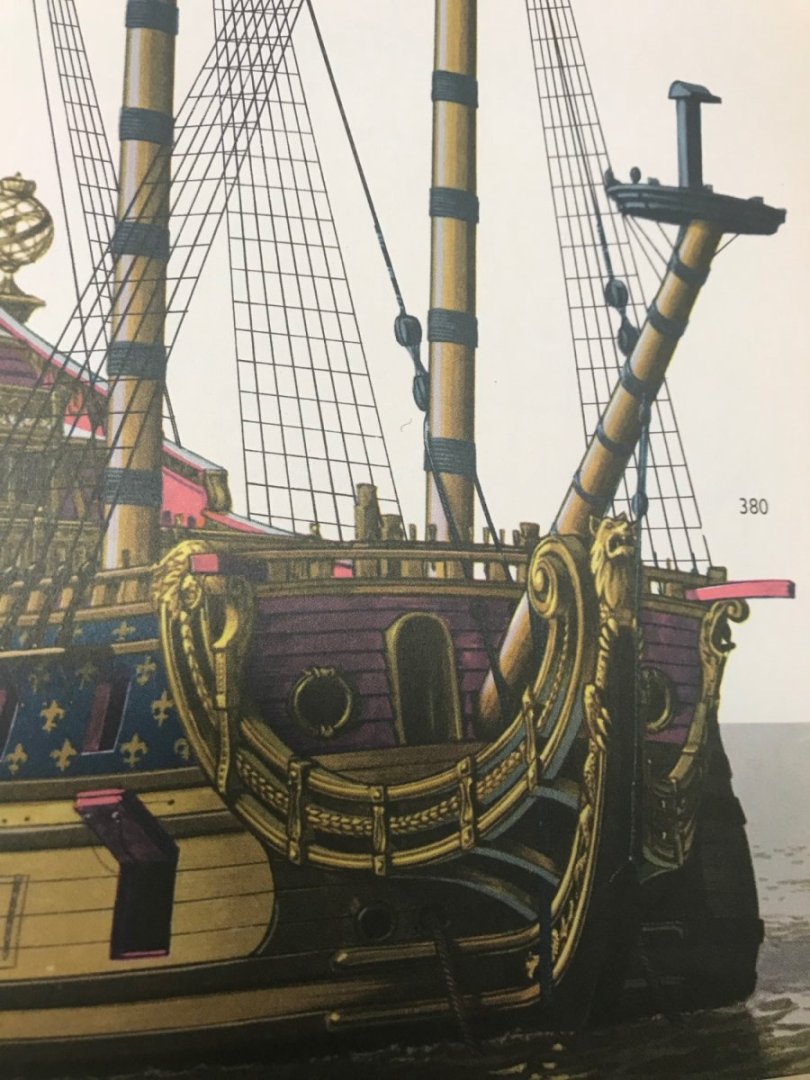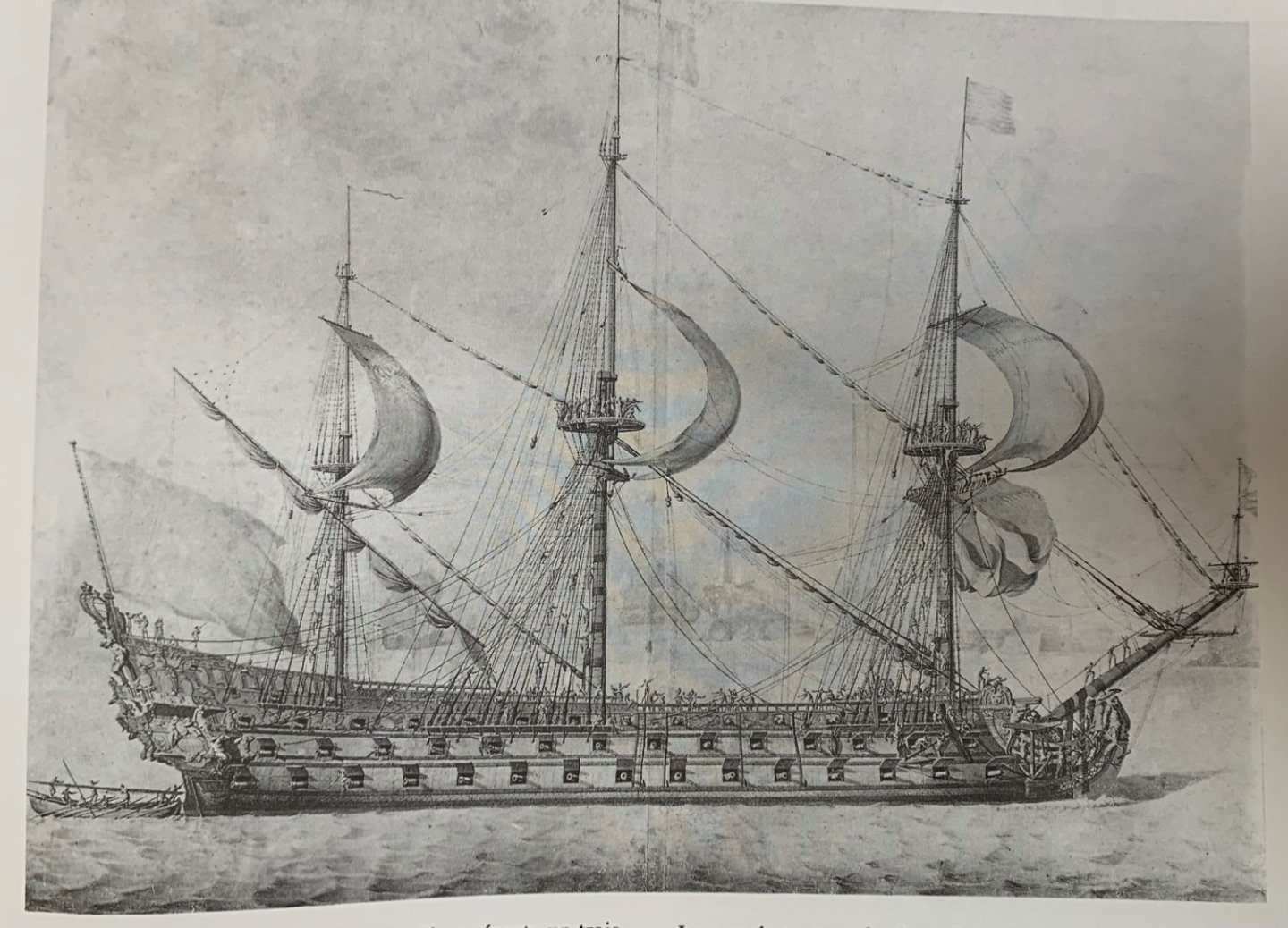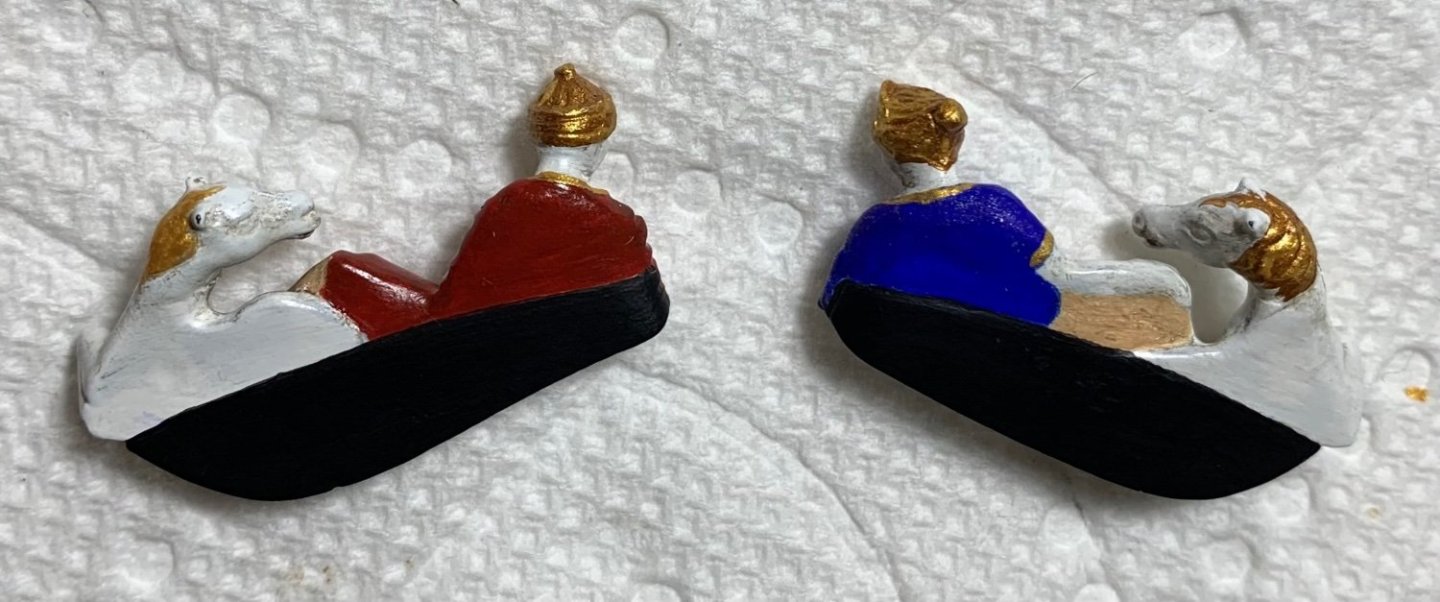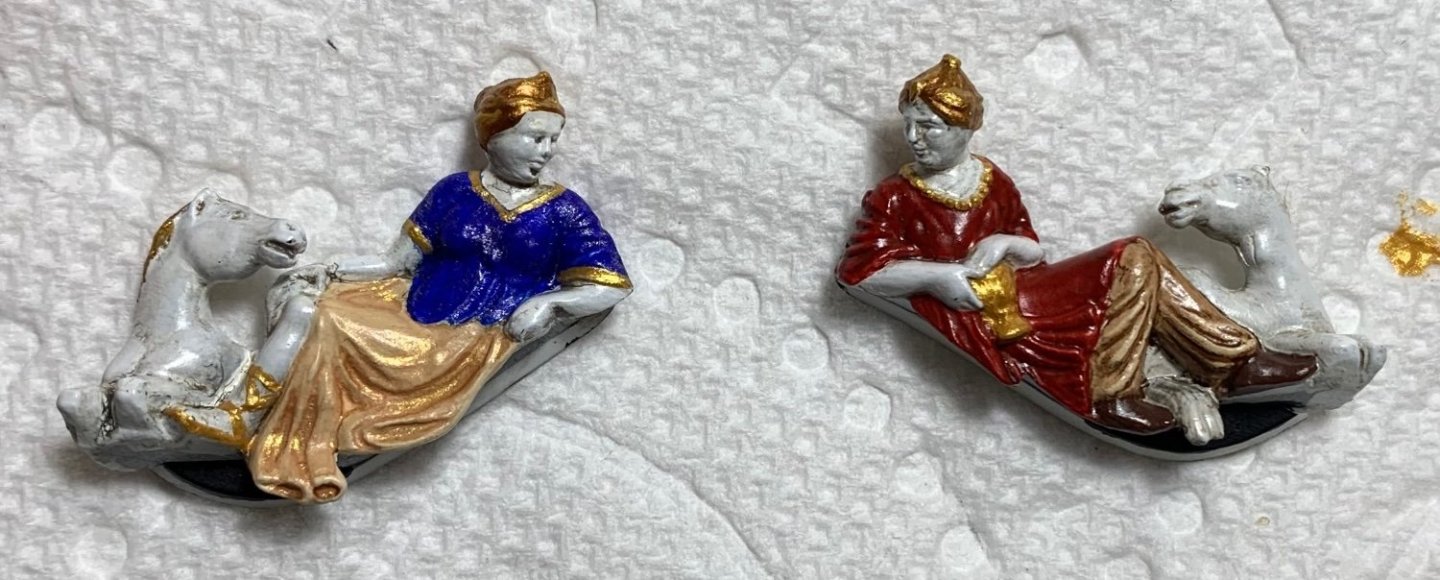-
Posts
3,292 -
Joined
-
Last visited
Content Type
Profiles
Forums
Gallery
Events
Everything posted by Hubac's Historian
-
The case is appropriately austere, so that the model can really shine. It has been a real pleasure watching this beauty take shape. I’ve said so before, but one of my favorite features of this model is your particular treatment of the stylized cut-aways; it is unique to you, and really shows the interior to great advantage. Congratulations on the excellence of your achievement! What might you have in mind for your next project?
- 589 replies
-
- le gros ventre
- cargo
-
(and 1 more)
Tagged with:
-
That is some brilliant textiles management, Dan! Is Lt. Pasco nobility though inter-marriage?
-
Frank, all of your extra care and attention to detail has really elevated this model far beyond the kit it started out as. Brilliant work!
- 510 replies
-
- reale de france
- corel
-
(and 1 more)
Tagged with:
-
Thank you, Eric! I thought I might get in some ship-time tonight, but getting back in the swing of life after vacation took precedence, unfortunately. I appreciate the kind words, though.
- 2,696 replies
-
- heller
- soleil royal
-
(and 9 more)
Tagged with:
-
Much better, and yes, I agree with Michael. Good recovery, Bill.
- 1,508 replies
-
- Le Soleil Royal
- Heller
-
(and 1 more)
Tagged with:
-
I’m sorry to agree, but that is the case. Perhaps you can fish them through the shrouds up at the masthead, with a sewing needle to open a space.
- 1,508 replies
-
- Le Soleil Royal
- Heller
-
(and 1 more)
Tagged with:
-
- 1,508 replies
-
- Le Soleil Royal
- Heller
-
(and 1 more)
Tagged with:
-
Objectively speaking, your rigging work is brilliant, but especially more-so considering the scale. It is always a pleasure to stop by.
-
Does Mile make his own line, or does he source it from someone else? If so, from whom? The line looks very good.
- 86 replies
-
- royal caroline
- yacht
-
(and 1 more)
Tagged with:
-
I’m just catching up, Kevin, and I have to say that you are making a superlative job of this build. Testament to that fact is that Mrs. Kevin is happy to lend a hand at the shipyard. It all looks really great! I must also pay my humble respects to Chris for designing such a great model!
- 443 replies
-
- Indefatigable
- Vanguard Models
-
(and 1 more)
Tagged with:
-
Dad is good today - we had a nice birthday lunch!
- 1,508 replies
-
- Le Soleil Royal
- Heller
-
(and 1 more)
Tagged with:
-
Here are a few pics that might be useful to you bill. The Louis Quinz model: Lemineur’s St Philippe: Bjorn Landstrom:
- 1,508 replies
-
- Le Soleil Royal
- Heller
-
(and 1 more)
Tagged with:
-
A little chocka-block. We were delayed getting out to Hampton Bays by a day, and I was only there for a day and a half. Today, my sister and I will take our Dad out for his 89th birthday with friends. I’ll work a couple of days and then head back out to the Hamptons for a couple more days. Ironically, and in spite of the heatwave, I love the sauna and hot-tub, so I make full use of them while I’m there. Also, my son has been bit by the basketball bug, so we spend a fair amount of time at the courts together. Shooting a basketball has always been one of the single-most relaxing pass-times for me. Tonight, when I get home, I’ll spend some time on the ship. Maybe get my backboard glued in, and other parts prepped and painted. I’ll have some more consistent time off, the second week of August, so that will be nice. Thanks for asking!
- 1,508 replies
-
- Le Soleil Royal
- Heller
-
(and 1 more)
Tagged with:
-
Exposed framing is just one of the things you do that I love so much! The effect is dynamite on Constitution, and equally impressive here.
-
To answer that question, Bill, I would reference builds by some of the more experienced builders to see how they sequence the rigging. Because it is of the period and very present in my mind, here is an extraordinary model of the HMS Sussex: Of course, there is also Marsalv’s Gros Ventre and Archjofo’s La Creole - two of the most exactingly rigged models on the forum, IMO.
- 1,508 replies
-
- Le Soleil Royal
- Heller
-
(and 1 more)
Tagged with:
-
That is an approach that I may be able to adapt Bill. Because it is difficult to find cloth that looks good at this scale, I was planning to make my sails from Modelspan tissue - the stuff airplane modelers cover their fuselages with. In that scenario, you allow the sail area to hang down through a cut opening, and then you wet the material with your thinned glue medium. It produces nicely billowing sails. What I want is a little more extreme, though, so maybe I can adapt your technique and carve the billowing shape out of something soft, like a block of balsa, and then glass the surface of my form with something that the glue medium won’t stick to - maybe epoxy? Back in the pattern shop of Steinway, we used to use this phenolic resin-coated plywood for jig and fixture forms because glue didn’t stick to it. Maybe that kind if resin can be purchased in liquid form somewhere. I would also glue-in thin-gauge wire around the perimeter, to be concealed by the bolt ropes. Thanks for the suggestion Bill, I’ve been grappling with how to approach that problem for some time. If I can pull it off, it will look amazing! Thank you all for the vacation well-wishes. I am looking forward to some time away from NYC.
- 2,696 replies
-
- heller
- soleil royal
-
(and 9 more)
Tagged with:
-
Fully rigged and following the example of unfurling sails shown below: It is tempting to stop at the lower mast sections, and show the ship as laid-up in ordinary, but the overall impression of a fully masted ship, underway, is too irresistible for laziness to intervene. I’m not quite sure how I will achieve such dramatically billowing topsails, but that should be a fun stage of the build. It will all be done at some point before I retire!
- 2,696 replies
-
- heller
- soleil royal
-
(and 9 more)
Tagged with:
-
I really like your hatch modifications, Maurice. A very nice improvement!
- 648 replies
-
- Indefatigable
- Vanguard Models
-
(and 1 more)
Tagged with:
-
Thanks, Dan! You know me - fortification is never too far from my fingertips 😀 I decided to play around with thin metallic wash coats of gold and silver for the continental figure of Europe. As the wealthiest region of the world, I wanted her to have a shimmery, almost etherial quality. The basecoats for the lower garb of both Europe and Asia are the same ModelMaster Random Tan. For Asia, I went over this color with a brown enamel wash. For Europe, I used a thinned application of Citadel red wash, followed by several applications of a very thin wash of bright gold. The gold collects in the recesses in a very satisfying way. Initially, I wasn’t happy that the folds of Europe’s blouse did not really show through the Ultra Marine. That was why I decided to try a silver wash. The pictures don’t really do these girls justice. For the backsides, I was kind of forced to end the naturalistic painting of the figures along the original part line, where I filled-in with new styrene. I wanted to follow the cyma-curves of the tafferal, but that just wasn’t feasible: The black will fade into the black of the tafferal. Well, that’s it for now. I’ll be on and off vacation for the next several weeks. I’m touch-up painting, and getting all of these elements ready for assembly. I’ll post glamour shots of the whole ship, in a few weeks, when it’s all together.
- 2,696 replies
-
- heller
- soleil royal
-
(and 9 more)
Tagged with:
About us
Modelshipworld - Advancing Ship Modeling through Research
SSL Secured
Your security is important for us so this Website is SSL-Secured
NRG Mailing Address
Nautical Research Guild
237 South Lincoln Street
Westmont IL, 60559-1917
Model Ship World ® and the MSW logo are Registered Trademarks, and belong to the Nautical Research Guild (United States Patent and Trademark Office: No. 6,929,264 & No. 6,929,274, registered Dec. 20, 2022)
Helpful Links
About the NRG
If you enjoy building ship models that are historically accurate as well as beautiful, then The Nautical Research Guild (NRG) is just right for you.
The Guild is a non-profit educational organization whose mission is to “Advance Ship Modeling Through Research”. We provide support to our members in their efforts to raise the quality of their model ships.
The Nautical Research Guild has published our world-renowned quarterly magazine, The Nautical Research Journal, since 1955. The pages of the Journal are full of articles by accomplished ship modelers who show you how they create those exquisite details on their models, and by maritime historians who show you the correct details to build. The Journal is available in both print and digital editions. Go to the NRG web site (www.thenrg.org) to download a complimentary digital copy of the Journal. The NRG also publishes plan sets, books and compilations of back issues of the Journal and the former Ships in Scale and Model Ship Builder magazines.





